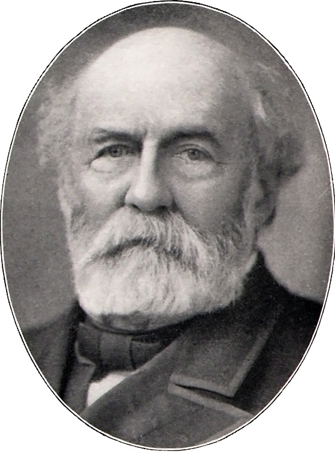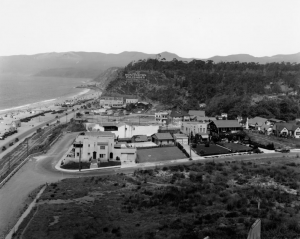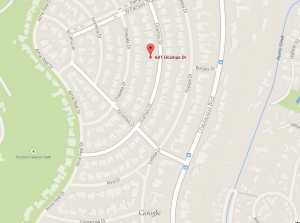 Abbot Kinney a Real Estate Developer, sold 247 acres to Colis Huntington in 1888. When the decision was made to establish the port of Los Angeles in San Pedro and with the death of Collis Huntington and a deteriorating housing economy ,his heirs sold 226 acres in 1926 to Robert C. Gillis.
Abbot Kinney a Real Estate Developer, sold 247 acres to Colis Huntington in 1888. When the decision was made to establish the port of Los Angeles in San Pedro and with the death of Collis Huntington and a deteriorating housing economy ,his heirs sold 226 acres in 1926 to Robert C. Gillis.
A Canadian immigrant, Gillis was president of the Santa Monica Land and Water Company, whose large-scale land purchases set the pattern for subdivisions from Westwood to Pacific Palisades. Honoring the legacy of the Huntington family, Gillis named the new suburb “Huntington Palisades” and planned to transform it into a fashionable upper middle-class community.
 Gillis chose a romantic scheme of curved streets and landscaped boulevards. Concentric semi-circular drives surrounded an open park are (bounded by El Cerco Place) and intersected a broad entry street with landscaped central parkways (Pampas Ricas). The design reflected the high standards set by Gillis and Reverend Robert Scott (founder of Pacific Palisades and president of the Pacific Palisades Founders Association). The design included elements characteristic of the Olmstead brothers, who also laid out New York’s Central Park. The elder Olmstead brother, Frederick, had come to Los Angeles to help in planning Palos Verdes and he was hired to help in designing the Huntington.
Gillis chose a romantic scheme of curved streets and landscaped boulevards. Concentric semi-circular drives surrounded an open park are (bounded by El Cerco Place) and intersected a broad entry street with landscaped central parkways (Pampas Ricas). The design reflected the high standards set by Gillis and Reverend Robert Scott (founder of Pacific Palisades and president of the Pacific Palisades Founders Association). The design included elements characteristic of the Olmstead brothers, who also laid out New York’s Central Park. The elder Olmstead brother, Frederick, had come to Los Angeles to help in planning Palos Verdes and he was hired to help in designing the Huntington.
Gillis divided the Huntington into various lot sizes and set minimum construction costs. He established rules and restrictions that prohibited property owners from using lots for other than residential purposes, erecting dwellings of more than two stories, growing hedges to more than five feet, and placing houses without regard to setback lines. Gillis extended these restrictions into perpetuity and established a property owners’ association to enforce them.
The development of the Huntington Palisades was left to Mark Daniels and W.W. Williams. Underground utilities were installed and ornamental light fixtures were provided, costing four times the normal amount for such services. Street names were chosen by the project engineer, W.W. Williams, who named them after famous places and people in Mexico, where he had spent much of his mining career. Alma Real was named for his lady friend, a singer and dancer from Mexico. Toyopa was the name of a lost mine in Sonora, Mexico. Chapala is the name of the largest lake in Mexico. Corona del Mar means “crown of the sea” in Spanish. The initial buyers of the  various lots were also offered access to a three hundred foot stretch of private beach and membership in the new neighborhood association. The opening ceremonies for the development were held on January 20, 1926. The first home, a beautiful 12 room colonial located at 601 Ocampo Drive, was completed before the end of 1926 and is still standing today.
various lots were also offered access to a three hundred foot stretch of private beach and membership in the new neighborhood association. The opening ceremonies for the development were held on January 20, 1926. The first home, a beautiful 12 room colonial located at 601 Ocampo Drive, was completed before the end of 1926 and is still standing today.
